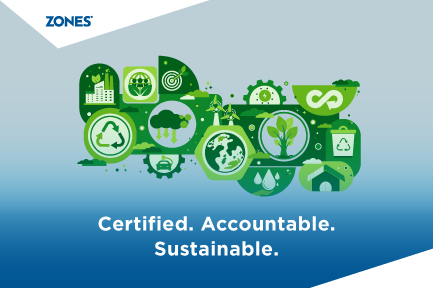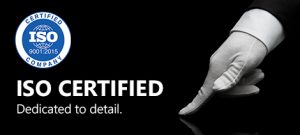Certified. Validated. Committed: Zones’ Path to Sustainability Leadership
Measuring What Matters: Recent Achievements by the Numbers In an era where corporate responsibility extends far beyond profit margins, technology...
3 min read
![]() Zones
:
Sep 10, 2025 9:57:18 AM
Zones
:
Sep 10, 2025 9:57:18 AM

Every piece of retired IT equipment carries three hidden liabilities: data risk, environmental risk, and reputational risk. Certifications and third‑party standards are the proof points organizations need to neutralize those liabilities during refreshes, migrations, and decommissioning projects. This blog explains why certification matters in IT Asset Disposition (ITAD), which certificates and standards to look for, and how certification converts policy into verifiable practice.
Certification is the closest thing to a 'trust shortcut' in ITAD. When procurement, security, and sustainability teams evaluate a partner, certifications answer the hard questions: Is data being destroyed to an auditable standard? Are recycling practices protecting the environment? Can the chain of custody withstand an audit? Third‑party certifications demonstrate that a provider's people, processes, and facilities have been assessed against a known benchmark. They reduce vendor due diligence time, lower procurement risk, and create the records auditors demand.
Certification becomes far more powerful when integrated into IT Asset Management (ITAM) workflows. Link certificates of destruction and disposition receipts back to the asset record so audits pull a single consolidated report instead of a packet of PDFs. That one‑click evidence model shortens audit cycles and satisfies compliance teams faster.
Linking certification evidence to procurement and asset data also enables better financial decisions: knowing which assets are remarketable (and which require destruction) at procurement stage leads to smarter refresh cycles and improved TCO forecasting.
Certified ITAD reduces audit labor, shortens procurement cycles, lowers the probability of a data breach from retired hardware, and reduces environmental liabilities. Industry benchmarks like the IBM Cost of a Data Breach report help quantify the upside of prevention when arguing for certified vendors during procurement.
Zones combines certified processes with lifecycle services to make certification practical: certified data erasure and destruction, refurbishment and remarketing under R2/e‑Stewards practices, secure chain‑of‑custody logistics, and ingestion of certificates into asset records so compliance teams can produce single‑click audit exports.
For practical guides, Zones publishes ITAD whitepapers, case studies, and runs Tech Talks that walk teams through implementing certified workflows, such as the Zones IT Asset Disposition overview, Zones ITAD case studies, and Zones Tech Talks.
Certification is not bureaucracy — it is a practical control that turns contractual promises into independently verified actions. For teams running rollouts, migrations, or large refreshes, baking certification requirements into procurement and ITAM workflows reduces risk, speeds audits, and preserves brand value.

Measuring What Matters: Recent Achievements by the Numbers In an era where corporate responsibility extends far beyond profit margins, technology...
.png)
Every retired IT asset hides three costly risks: data exposure, environmental harm, and reputational damage. A robust IT Asset Disposition (ITAD)...

Quality is an ongoing process, but we just reached an important milestone in our march toward it: our Logistics & Integration Center has achieved...